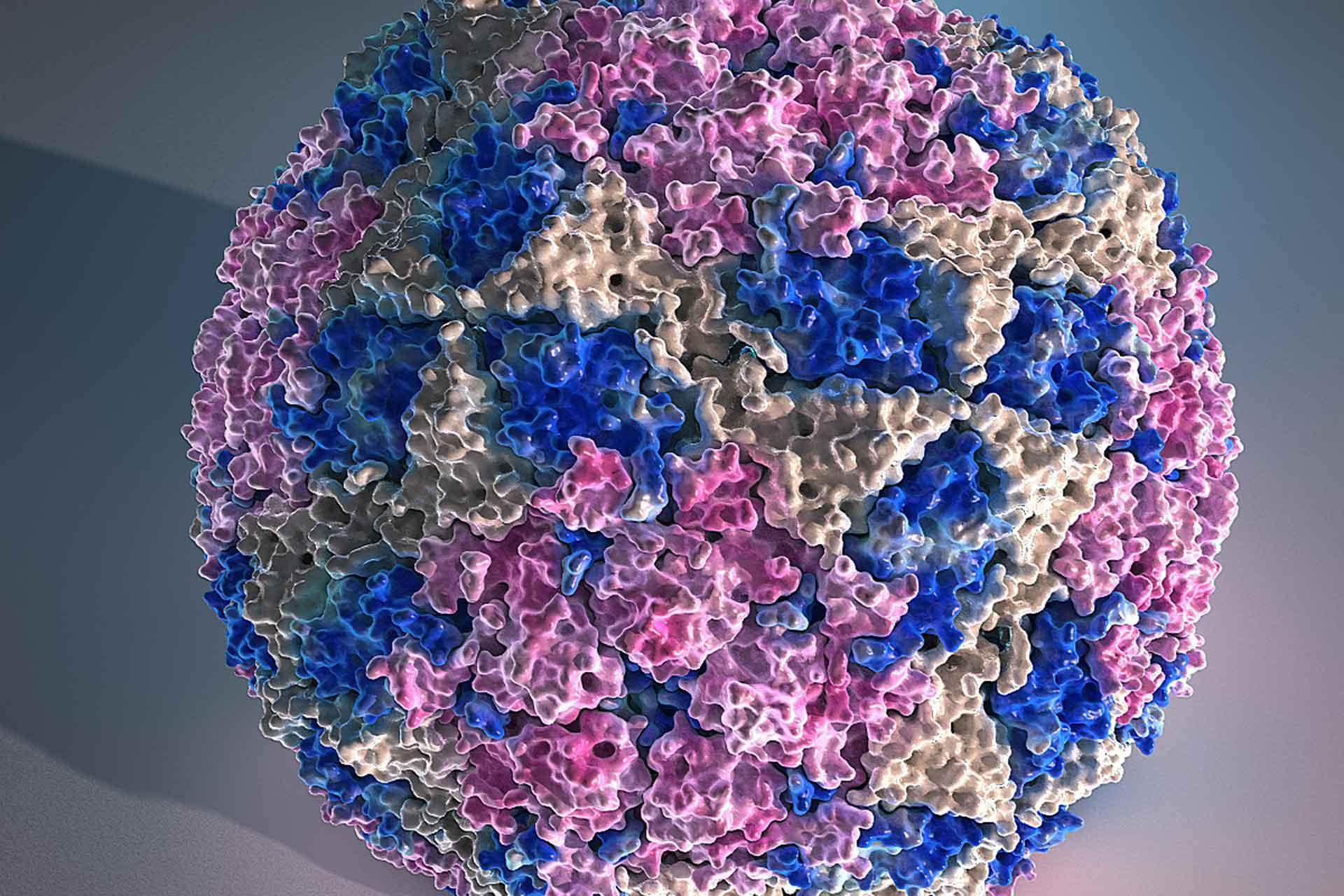In collaborative research led by The Pirbright Institute, scientists have generated a ‘hybrid’ foot-and-mouth disease virus (FMDV) with improved stability, which will increase its effectiveness when administered as a vaccine. They targeted the Southern African Territories (SAT) 2 serotype viruses, which are among the least stable of the seven different types of FMDV.
Developing vaccines for SAT serotypes is particularly challenging as they exhibit huge amounts of variation, so adapting the vaccine viruses to keep up with field strains is a constant battle. They are also highly sensitive to changes in pH and temperature, meaning their outer shells, known as capsids, dissociate more easily into subunits. SAT2 vaccines, which are made from inactivated virus, therefore readily break down without constant refrigeration. As effective vaccines require intact capsids, this reduces the protection that the vaccine can offer.
However, advances in reverse genetics and structural analysis have allowed scientists to take a deeper look at why these capsids are more prone to breaking down, and what characteristics they can change in order to make them more stable.
In their paper published in Scientific Reports, the team genetically engineered a ‘hybrid’ SAT2 virus by replacing most of its internal material with that of an O serotype virus, which is known to be inherently more stable. The resulting hybrid and wild type vaccines were then exposed to elevated temperatures and only the hybrid was shown to induce antibody responses predicted to protect against FMD infection. The researchers were also able to quantify the amount of intact capsids left after heat treatment using new techniques.
“This was particularly exciting for us, as we could see exactly how our changes to the hybrid genome altered the number of viruses that could survive at higher temperatures. This allows us to make informed decisions about which parts of the virus we should change to make it more stable, and allow vaccine viruses to survive transport or storage in places where cold chains are often sporadic”, said Dr Julian Seago, head of the Molecular Virology group at Pirbright.
After extensive testing the team were able to identify that VP4 (an internal capsid protein) was vital for the increased stability of the modified SAT2 virus. “Advances in technology have allowed us to progress this research and show how switching serotype proteins, particularly the VP4 subunit, can be an effective method for improving other FMD serotype vaccines,” said Dr Seago.
